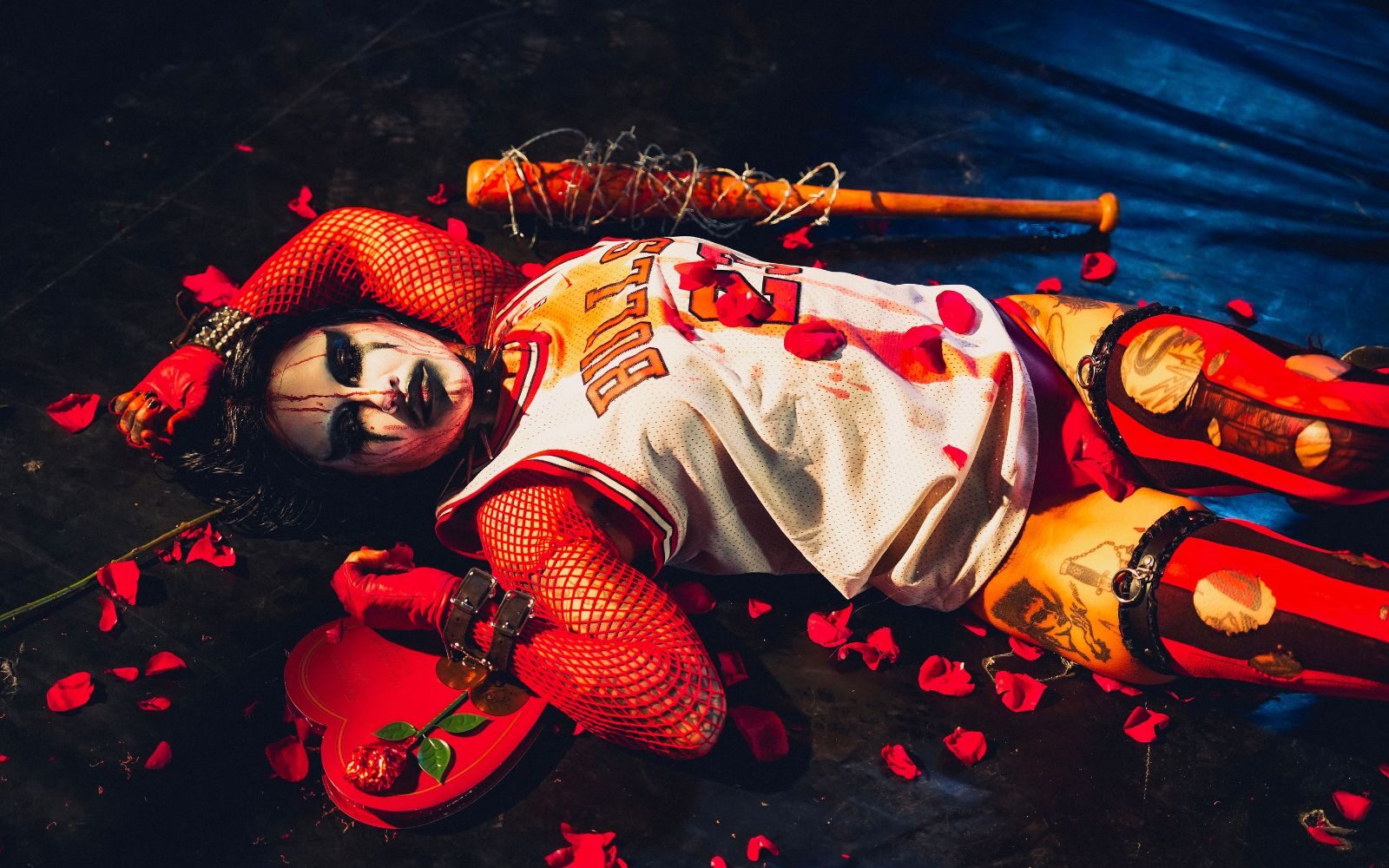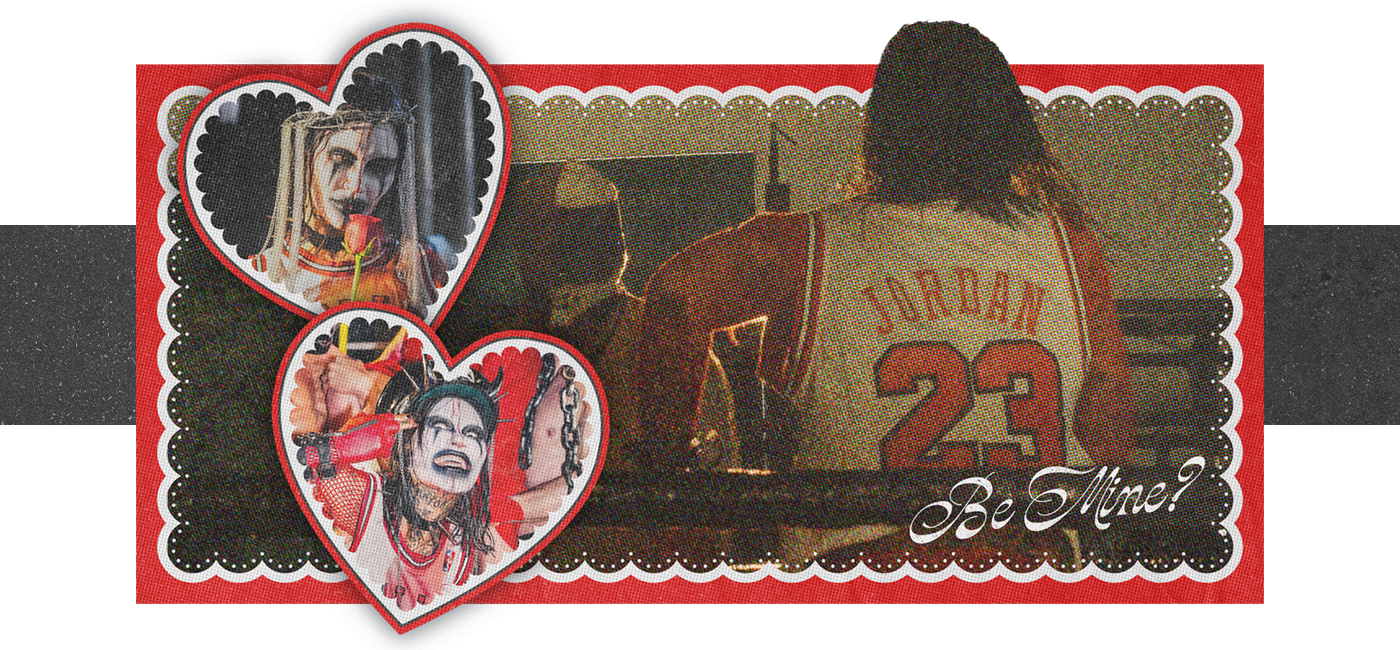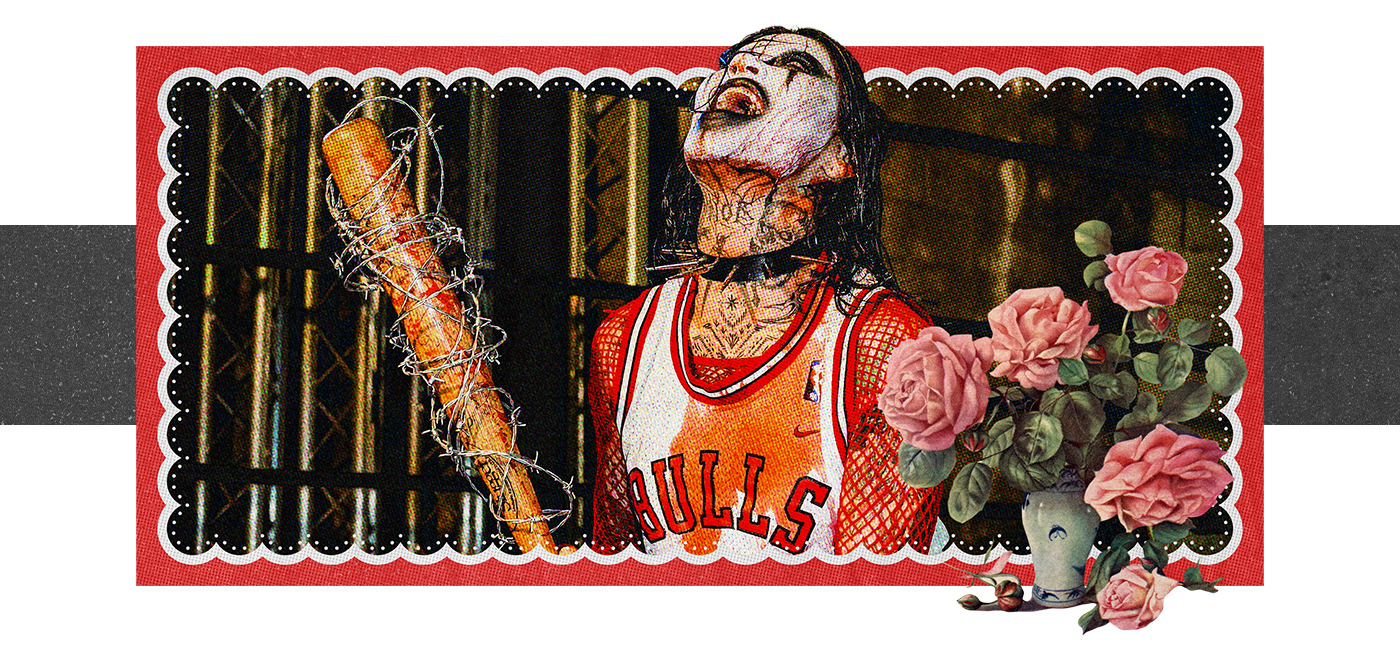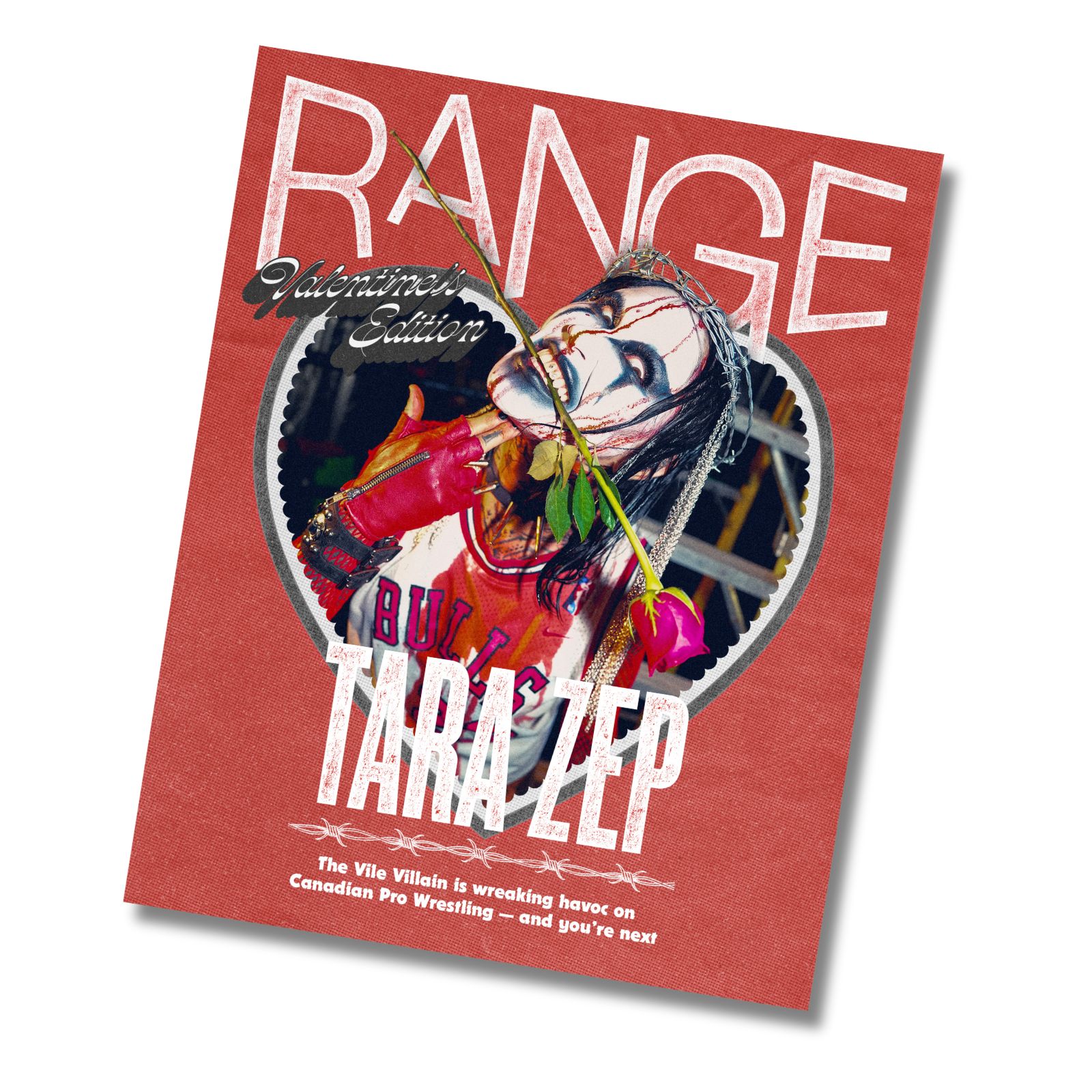By Cam Delisle
In the wake of her breakthrough third album, Through The Wall, the experimental-R&B auteur reflects on a career-defining year.

The world of pro-wrestler The Vile Villain is one of disturbed mania, passionate screams and a perverse enjoyment of pain. Last year, as the miscreant character took a frenzied step towards the ring – flashing a Joker-esque painted grin with her tongue playfully thrust forward, while her walkout song, Dana Dentata’s “pantychrist” played in the background – a match commentator in Winnipeg announced her as being “from the Vancouver mental institution.” The crowd cheered and hollered in response, and more than one fan could be heard shouting “I love you!” at the top of their lungs.
The woman behind the get-up is Tara Zep, adorned in full-body tats and a studded leather jacket, with death metal makeup and wet, greasy hair – and she’s absolutely living for this moment. “When I’m in character, I feel fearless. I feel feral,” she says. “I feel the most myself, but turned up to 100.”
Zep, who has now been professionally wrestling for two years, lives and breathes the culture. Some of her earliest memories are of watching WWF (now WWE) with her parents during the Attitude Era – a period of wrestling programming from 1997 to 2002 which featured increased violence, profanity, and sexual content, and which many fans remember as the best time for wrestling, Zep included.
“I was in love with The Undertaker,” she says emphatically. Picture: entranced six-year-old eyes fixed on the TV screen as a nearly seven-foot tall man wearing black leather menacingly enters the ring. “I think his character kind of framed my future in a sense, because I was always into the dark arts, horror, and metal music after that.” It’s no surprise, then, that her own character is modelled after similar traits.
“[The Vile Villain] was kind of originally based on a younger me,” she says. “I grew up in a super small town where everyone was a redneck idiot, and I was an art freak, so I had no friends, and all I ever wanted to do was look like my character at school.” Another one of her idols was Mick Foley, who played characters like Dude Love, Cactus Jack, and Mankind — remember the dude with the nasty sock puppet sidekick? Zep now calls Foley a friend. She adored the theatrics of his performance. “Growing up and to this day, my favorite wrestlers have the biggest personalities,” she says. “I never really watched wrestling for the moves, I watch wrestling for the story that they’re telling.”

Though Zep discovered wrestling in her youth, her initial devotion was briefly and painfully dispelled when she first learned that the fights she was so enamoured with were scripted, a revelation which she now likens to the belief in Santa Claus. She stepped away, but not entirely. She could never fully turn her back on the allure of her heroes, scripted or not, and in her late twenties she found herself experiencing a revived dedication when she started watching the Combat Zone Wrestling (CZW) and Extreme Championship Wrestling (ECW).
The promotion hosted a lot of death matches and hardcore style wrestling, which Zep favoured, and led her to find similar promotions like Frontier Martial-Arts Wrestling (FMW) and Game Changer Wrestling. “I fell in love with wrestling again,” says Zep, “and it was just as magical as when I was a little kid, watching it for the first time.”
During the pandemic, she bore down on consuming wrestling culture, watching everything there was to watch. “I was so enamoured by the death match style of wrestling that I thought, when things start to open up again, I’m going to at least try to become a wrestler myself,” she says. Having been a self-proclaimed ‘weird art kid’ growing up, with little exposure to sports, Zep didn’t initially believe she could achieve the athletic merit required to perform at the level of her role models – she just wanted to be as close to the action as possible. So she considered her options.
Though she was living in Toronto at the time, working as a tattoo artist, she wasn’t attached to a future in the city. When a friend told her that Lions Gate Dojo in Vancouver was the best wrestling school in the country, she didn’t hesitate. “I told my friends two weeks before I moved, that I was moving, and they were like, ‘Oh yeah, sure you are.’ And I literally packed up my shit, and headed to Vancouver. It was the most spontaneous move of my life,” she exclaims.

She wanted to jump right into training, but lockdowns kept her from officially enrolling for another year, so she settled into her new life and bided the time. Finally, in February of 2022, it was her chance. She started going to the Dojo four days a week, upping her cardio, learning ‘spots’ (a planned sequence of moves intended for a match), ‘bumping’ (falling to the mat) and memorizing choreography.
“In the first six months of training, I was so intimidated by the workload,” she admits. Her body ached all the time, and she had to fight the imposter syndrome in her head that told her she wasn’t athletic enough. “It was really fucking hard honestly, but I stuck with it, developed the calluses and got better. I got over my fear of being judged.”
Classes evolved into student shows, in which she would wrestle classmates while the coaches watched, and offered input. The training lasted about a year before she was given the ok to start accepting bookings. To her surprise, she’d already been receiving requests. “Before I even had a match, I was posting photos of me in my gimmick, and I was getting emails from promotions all over the place wanting to book me,” Zep laughs. As soon as she debuted in the ring, as the Vile, face-painted, leather-clad Villain, she started accepting bookings all over North America.
The name is a nod to MF DOOM and his “supervillain” stage persona, while her costume takes inspiration from the face paint of Mexican Luchador wrestler Pagano and American wrestler “Sick” Nick Mondo. “[Pagano] looks like a cross between a psychotic clown and Gene Simmons and I love that,” she says. She writes “Vile” across her forehead as an ode to Mondo, who was known for writing “Sick” across his own forehead.

To get into character, Zep smears black across her teeth, greases her hair, and practices her most harrowing facial expressions. It’s important to her that she doesn’t cater to a certain stereotype of female wrestlers, which often depicts them as hyper-feminine and sexual. In the ‘90s, WWE actually adopted the term “Diva” to refer to its female performers. “I wanted to be the polar opposite of that — I want to be gross and creepy,” she says adamantly.
Her signature moves include the “IUDDT,” and her finishers, “The Tara-rizer,” and the “Hell-bow” top rope elbow drop. As a tribute to the late American wrestler Eddie Guerrero, she also enjoys using “The Three Amigos,” a series of three consecutive suplexes – but she finds the act is less about the moves, and more about hamming up her character. “When you have a loud character, such as myself, you can tell a better story because they have a background, and they have a personality that they can show the fans,” she says.
Vancouverites will be able to experience what she means at No Fate Pro Wrestling’s first match in February. The roster she’s booked includes some of the biggest wrestling names to come to BC, including her famous friend Mick Foley, who will be doing a meet and greet. You can purchase tickets to the event here.
“I think it’s so important to feel something when you watch wrestling, whether you’re disgusted by what you see, offended, freaked out or super stoked and excited,” she says. “And I think people dig my vision, because there’s nothing like it in Canada.”

By Cam Delisle
In the wake of her breakthrough third album, Through The Wall, the experimental-R&B auteur reflects on a career-defining year.
By John Divney
Still processing their debut album, Vancouver’s latest art-rock unit proves collaboration is the new rebellion.
By Cam Delisle
The elusive Kevin Parker soundtracks the self-medicated search for bliss on his fifth album, Deadbeat.